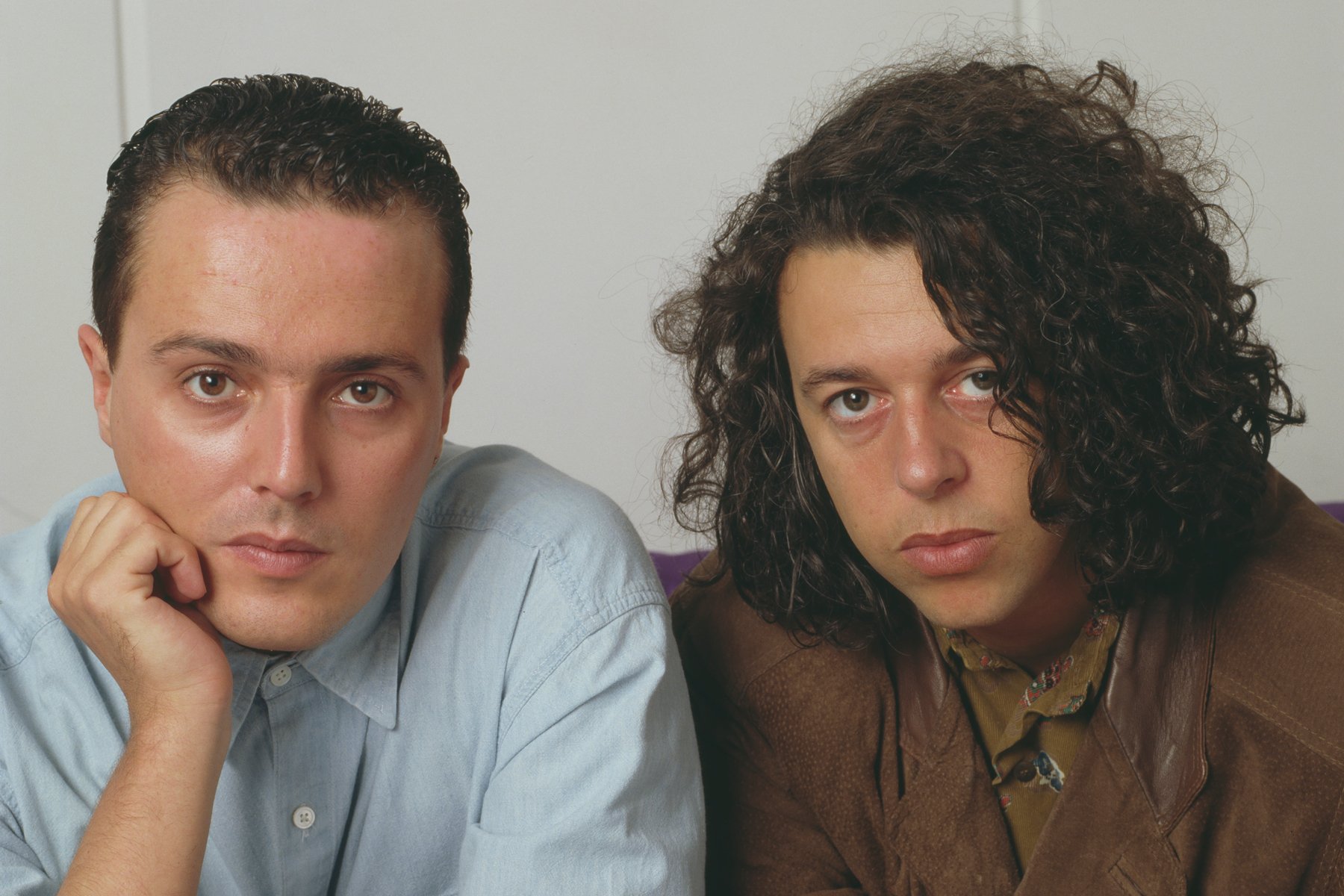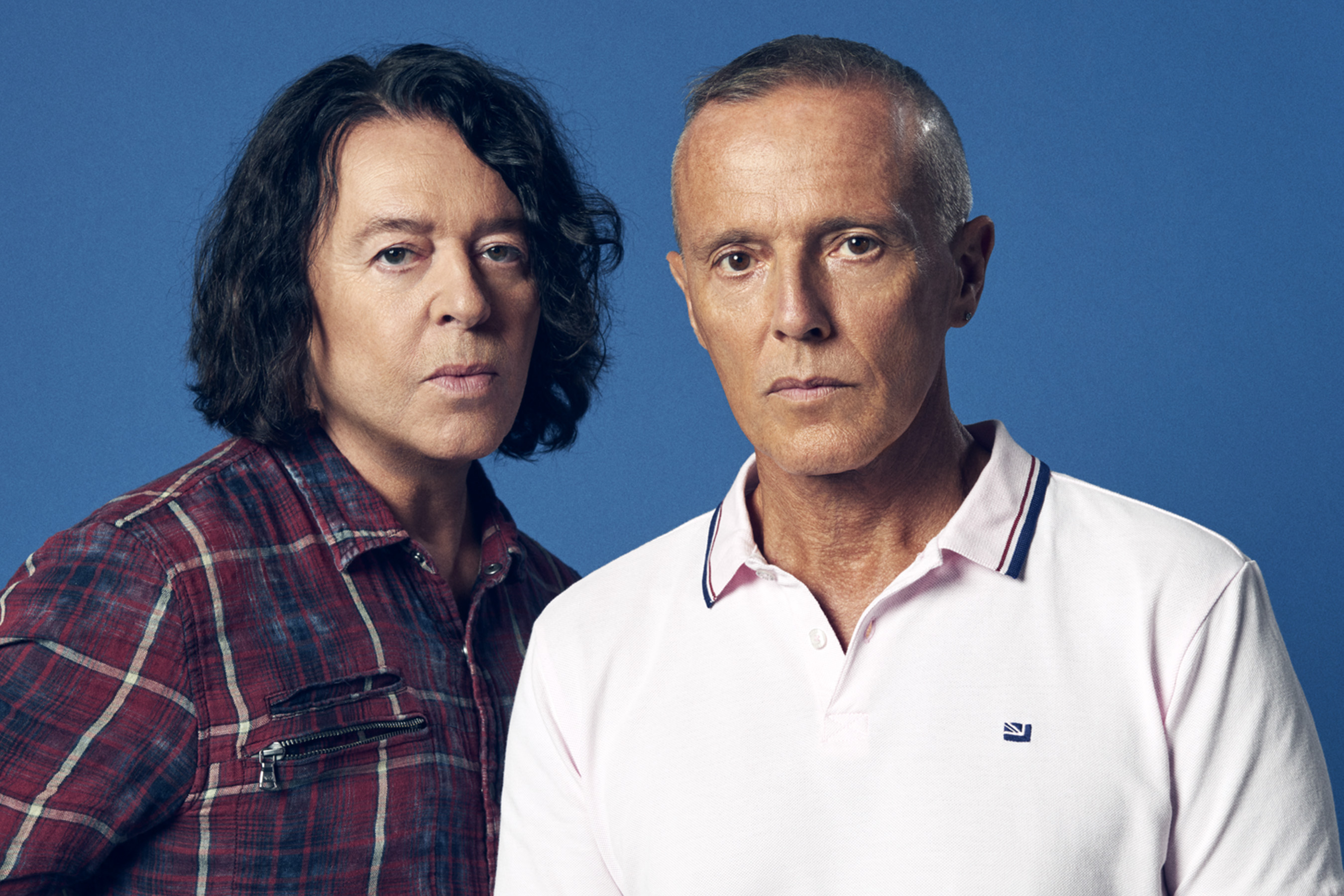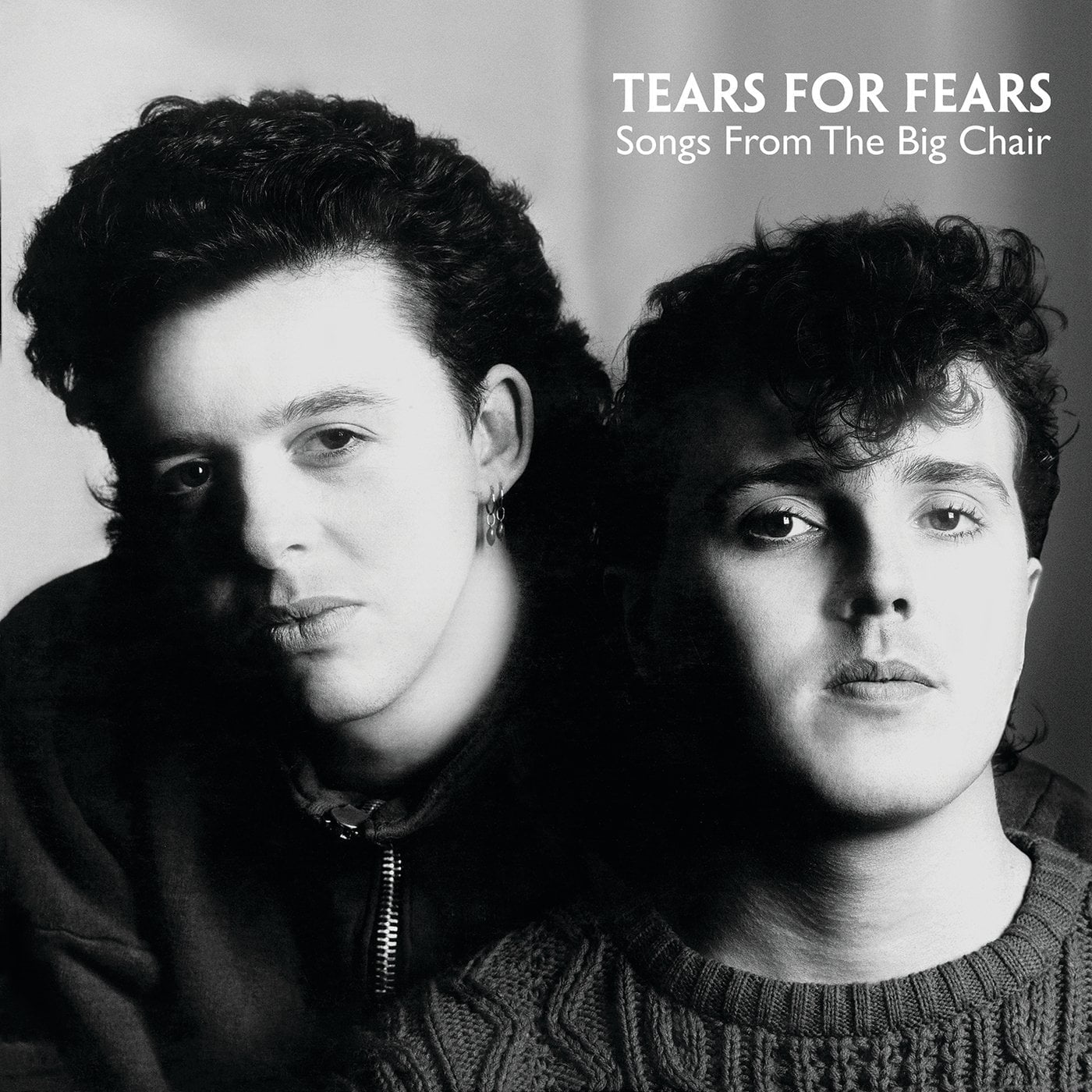For anyone who loves music that truly makes you think, yet also makes you want to move, you've probably spent some time with the sounds of Tears for Fears. This English music group, which first came together in Bath back in 1981, with Curt Smith and Roland Orzabal leading the way, really carved out a special spot in the music world. They were, in a way, different from many other synth pop acts coming out of Britain, often bringing a deeper, more reflective quality to their tunes.
Their journey, you know, has been quite something, marked by a collection of tunes that became well-known across the globe during the 1980s. From those early days, their unique approach to creating music, blending electronic sounds with words that really got people thinking, set them apart. It's almost as if their songs were designed to stay with you, long after the last note faded.
Whether you are someone who remembers them from their first rise to popularity or you are just now discovering their work, there is, honestly, a lot to appreciate. Their story includes a period where the two main people went their separate ways, only to come back together, showing a lasting creative connection. So, getting to know their body of work means exploring a sound that has, in some respects, continued to develop over many years.
- Who Is Randy Ortons Wife
- Good Movies To Stream
- Charlotte Flair Nude Pictures
- Kim Scott Mathers Young
- Anderson Cooper Says Dick
Table of Contents
- The Origins of Tears for Fears
- Who are the main people behind Tears for Fears?
- What kind of sound does Tears for Fears create?
- Tears for Fears- Iconic Tunes and Albums
- How have Tears for Fears' live performances evolved?
- Tears for Fears- A Continued Presence
- Why do Tears for Fears' songs still resonate?
- Tears for Fears- A Musical Legacy
The Origins of Tears for Fears
The story of Tears for Fears, a music group known for its thoughtful pop sounds, starts in Bath, England. It was the year 1981, and two individuals, Roland Orzabal and Curt Smith, decided to form this new musical endeavor. Prior to this, they had been part of another music act, one that played a type of music called mod. So, their previous experience together set the stage for what was to come. They had, you know, a shared vision for making music that connected with people on a different level, something beyond just simple pop songs.
Their coming together marked the start of a period that would see them become quite a big deal in the music world. They aimed to create sounds that were both catchy and also had a deeper meaning, something that would stick with listeners. It’s pretty clear that from the very beginning, they wanted to be a group that made you think as much as you tapped your foot. This approach, honestly, helped them stand out in a busy music scene. They were, you could say, building something quite unique.
This early period saw them putting together the foundational elements of their sound. They spent time crafting songs that would eventually make up their first collection of tunes. The influences they drew upon were varied, but they always seemed to filter them through their own distinct way of looking at the world. Their initial efforts were, in a way, a promise of the musical journey they were about to take everyone on, a path filled with interesting sounds and thoughtful words. That, is that, a pretty cool start for any group.
- Prize Money For Masters
- Olivia Jade Rowing
- Keanu Reeves And Cameron Diaz
- Brad Pitt And Angelina Jolie Twins
- Adan Mananzo
Who are the main people behind Tears for Fears?
When you talk about Tears for Fears, you are really talking about two key individuals: Roland Orzabal and Curt Smith. These two gentlemen are the founding members of the music group, and their creative partnership has been at the core of the band’s identity from the very start. Roland, in particular, has been a significant force behind much of the group’s written material. He has, you know, put together many of the words and musical arrangements that people have come to know and love.
Curt Smith, on the other hand, also contributes to the songs and brings his own distinct voice and presence to the music. While Roland has a lot of the writing credits for the group’s collection of songs, Curt’s input is, obviously, a very important part of the overall sound. Their collaboration, in some respects, creates a balance that has defined the Tears for Fears experience for decades. It’s almost like they each bring a piece of the puzzle that makes the whole picture complete.
Even when the two went their separate ways for a time, Roland continued to keep the Tears for Fears name alive. He put out musical collections like "Elemental" in 1993 and "Raoul and the Kings of Spain" in 1995, carrying on the group’s musical journey on his own. But then, in the year 2000, they came back together, which was, you know, a pretty big deal for fans. This reunion showed that their shared musical connection was still very strong, perhaps even stronger after their time apart. Their bond, you see, is pretty much the heart of the whole operation.
What kind of sound does Tears for Fears create?
Tears for Fears is a group that makes a kind of music often described as pop rock, with a heavy lean towards synth pop. What this means, essentially, is that they use a lot of electronic sounds, like synthesizers, to build their musical structures. But it’s not just about the electronic bits; their sound is also very much driven by tunes that get stuck in your head, the kind you find yourself humming later. They have, in a way, a knack for creating melodies that are both easy to remember and also quite moving.
Their music is also known for being quite thoughtful. Unlike some pop groups that focus purely on light, airy themes, Tears for Fears often explores deeper ideas in their songs. They have a way of putting words together that make you pause and consider things. So, you get this interesting mix: music that is catchy and easy to listen to, but also has a layer of meaning that invites reflection. It’s a pretty unique combination, honestly, and it sets them apart from many other music acts from their time.
When you listen to their work, you can hear how they combine different musical elements to create their signature sound. There are strong beats, interesting vocal arrangements, and those distinct synthesizer parts that really make their tunes stand out. They were, in some respects, pioneers in showing how electronic instruments could be used to create music that was both popular and had real artistic depth. This blend of thoughtful words and engaging sounds is, basically, what makes their music so special. It’s a sound that has, more or less, stayed true to itself over the years.
Tears for Fears- Iconic Tunes and Albums
Tears for Fears has a collection of tunes and full musical works that have truly left a mark on the music world. Their first full studio collection of songs, called "The Hurting," came out and quickly reached the top spot on the music charts in the UK. This album featured some very well-known tunes such as "Mad World," "Change," and "Pale Shelter." These early songs really set the stage for their unique sound, blending catchy music with words that made you think. "Mad World," in particular, rose to a good spot on the charts, reaching number 3. It was, you know, a strong introduction for them.
Then came "Songs from the Big Chair" in 1985, which contained some of their most widely recognized tunes. From this album came "Everybody Wants to Rule the World," a song that became incredibly popular across the globe. This particular tune, written by Roland Orzabal and Ian Stanley, really showed the group’s ability to create music that was both commercially successful and still held that thoughtful quality. Another very popular tune from this period was "Head Over Heels," which also saw a lot of play and became a favorite for many listeners. These songs, basically, solidified their place as a major music act.
Their music continued to find success through the years, with various songs making their way onto the charts. For instance, "Break It Down Again" also had its moment, staying on the charts for a good number of weeks in the early 1990s. Even after their initial burst of fame, their tunes continued to be played and appreciated. You can, you know, easily find collections of their best-known songs that let you listen to all these important works. These songs, in a way, tell the story of their musical journey and the impact they had on listeners.
How have Tears for Fears' live performances evolved?
Tears for Fears has, over the years, brought their distinct sound to audiences through many live shows. Their performances have always aimed to capture the energy and the thoughtful nature of their studio recordings. Recently, they even turned a concert into a full album, called "Songs for a Nervous Planet," which came out in October. This musical work includes 18 songs recorded live, plus four new studio tunes, almost like a bonus collection on top of the concert recording. It’s a pretty cool way, honestly, to let people experience their live show even if they couldn't be there in person.
They have also been quite active with special live appearances, like their residency in Las Vegas. This meant they were returning for another set of live shows in one specific spot, giving fans a chance to see them repeatedly. The news of these added dates was, you know, quite exciting for people who follow their music. It shows that even after all these years, there is still a strong desire from listeners to see them perform their well-known tunes and experience their unique sound in a live setting.
The way they present their music on stage, you see, has continued to develop. They make sure to bring their classic songs to life, often with a fresh energy that still respects the original recordings. For example, you can find official videos of their live performances that showcase how they play tunes like "Head Over Heels" for an audience. These recordings and live appearances truly give people a chance to experience the enduring appeal of Tears for Fears, showing how their musical creations hold up over time in front of a crowd. It’s pretty much a testament to their lasting appeal.
Tears for Fears- A Continued Presence
Even though Tears for Fears first came together many years ago, they have maintained a strong presence in the music world. Their music continues to be heard and discovered by new groups of listeners, showing that their sound has a timeless quality. You can, you know, easily find their music on various listening platforms, allowing people to stream collections of their most popular songs whenever they want. This accessibility helps keep their work alive and introduces it to those who might not have heard it before.
The group also keeps people updated through different music news sources. For example, you can find the latest news about them, their personal stories, and any new developments on sites like Billboard. This means that fans can stay connected and informed about what Roland Orzabal and Curt Smith are up to, whether it’s new music, tour dates, or other interesting facts. It’s pretty clear that they are not just a group from the past; they are, in a way, still very much a part of the current music scene.
Their dedication to creating new material, even after many years, is also a sign of their continued presence. The release of "Songs for a Nervous Planet," which includes new studio recordings alongside live tracks, shows that they are still actively making music. This kind of hybrid album, as it was called, provides both a look back at their live energy and a glimpse into their current creative efforts. So, in some respects, Tears for Fears is not just resting on past successes; they are, basically, still putting out interesting work for people to enjoy.
Why do Tears for Fears' songs still resonate?
The tunes created by Tears for Fears have a way of staying with people, and there are a few reasons why they still connect so strongly with listeners today. For one thing, their words often touch on feelings and thoughts that are pretty universal. They talk about things like desire, control, and the search for meaning, which are experiences that, you know, everyone can relate to at some point. This makes their songs feel personal and relevant, no matter when you hear them. It’s almost as if the words speak directly to your own experiences.
Also, the way they put music together is very memorable. Their songs have those catchy parts that you can’t help but hum along to, even if you’ve only heard them a few times. This combination of compelling words and engaging music creates a powerful listening experience. It’s not just background noise; it’s music that captures your attention and holds it. This kind of lasting appeal is, honestly, a mark of truly good songwriting and musical arrangement. They managed to hit on something special, you see.
Finally, the overall sound of Tears for Fears, with its mix of electronic elements and thoughtful pop structures, has aged quite well. It doesn't sound dated in the way some other music from the 1980s might. Instead, it feels fresh and interesting, even to new listeners. This is, basically, because they focused on good song creation and a distinct sound rather than just following fleeting trends. Their music has, more or less, stood the test of time because it was built on solid foundations. That, is that, a pretty big reason for their enduring popularity.
Tears for Fears- A Musical Legacy
The musical legacy of Tears for Fears is, quite simply, a rich and varied one. They are recognized as one of the most thoughtful and tuneful British synth pop groups, a reputation they earned through consistent quality and a unique approach to their craft. Their music has been a constant presence on the airwaves and in people's personal collections for many years, showing its lasting appeal. You can, you know, explore their entire collection of studio albums and single tunes, seeing how their sound developed over time.
From their very first studio collection, "The Hurting," which quickly climbed to the top of the charts, to their more recent releases and live recordings, their body of work tells a compelling story. Songs like "Everybody Wants to Rule the World" and "Shout" became huge international successes, cementing their place in music history. These tunes are still widely recognized and enjoyed today, a testament to their enduring power. It’s pretty clear that they created something truly special with those songs.
The journey of Roland Orzabal and Curt Smith, with their periods of working separately and then coming back together, adds another layer to their story. It shows a deep creative bond that has, basically, continued to bring interesting music to the world. Their concerts, too, are a big part of their legacy, with fans still eager to experience their music live. The availability of official music videos and live performance clips also allows people to fully appreciate the visual and auditory aspects of their artistry. So, in some respects, the impact of Tears for Fears is still felt very strongly in the music world.
- Mufasa Characters 2024
- Madison Beer Nude Video Leak
- Skinny Mindy Kaling
- Kelly Rowland Naked Pics
- Kim Scott Mathers Young


